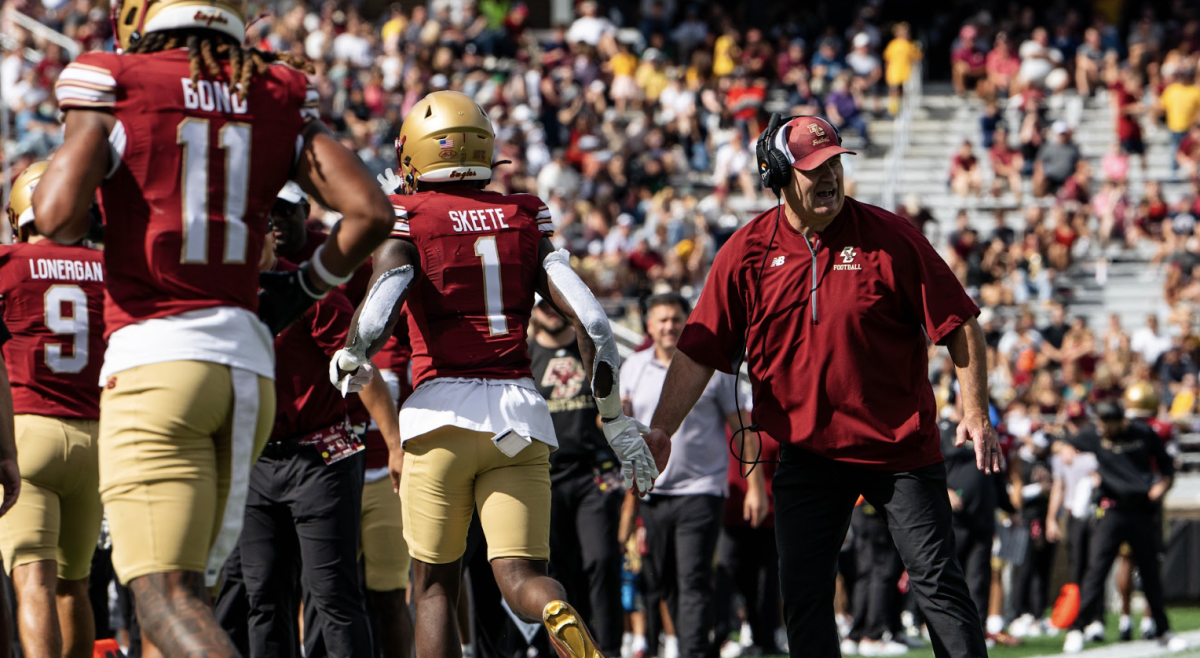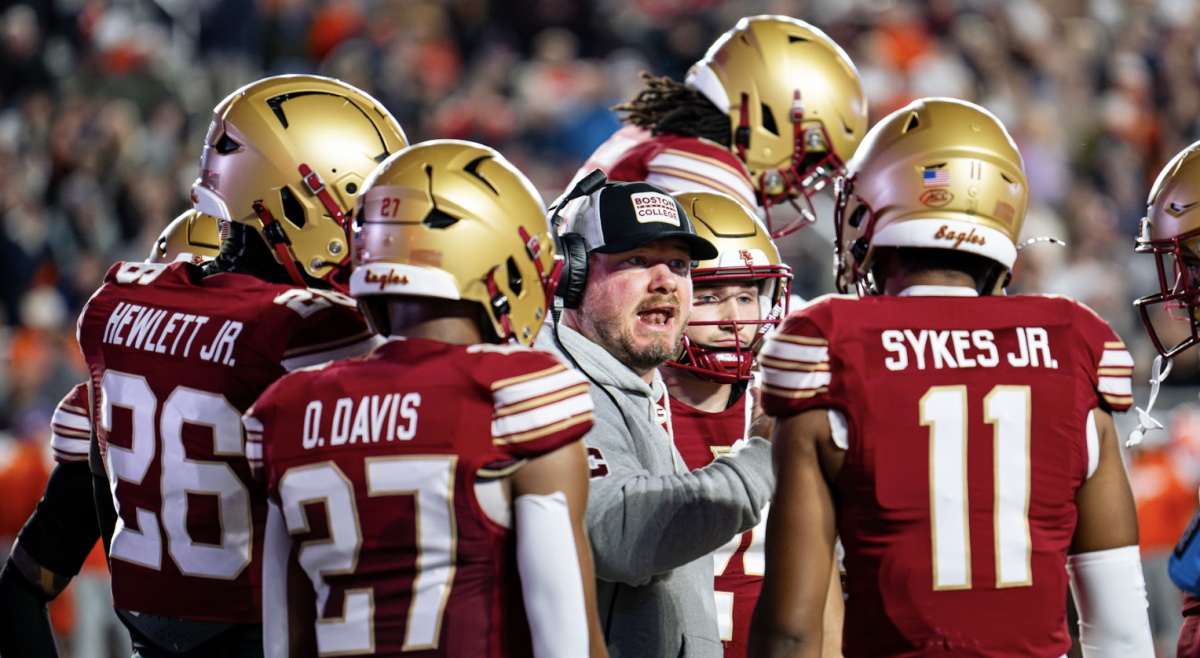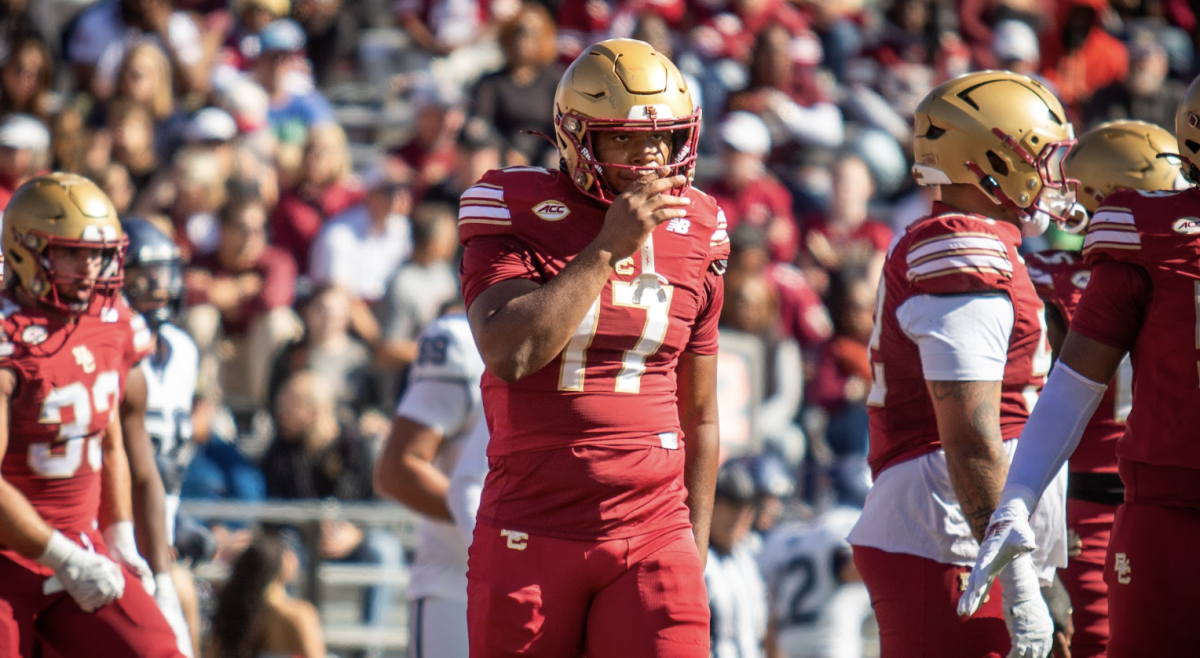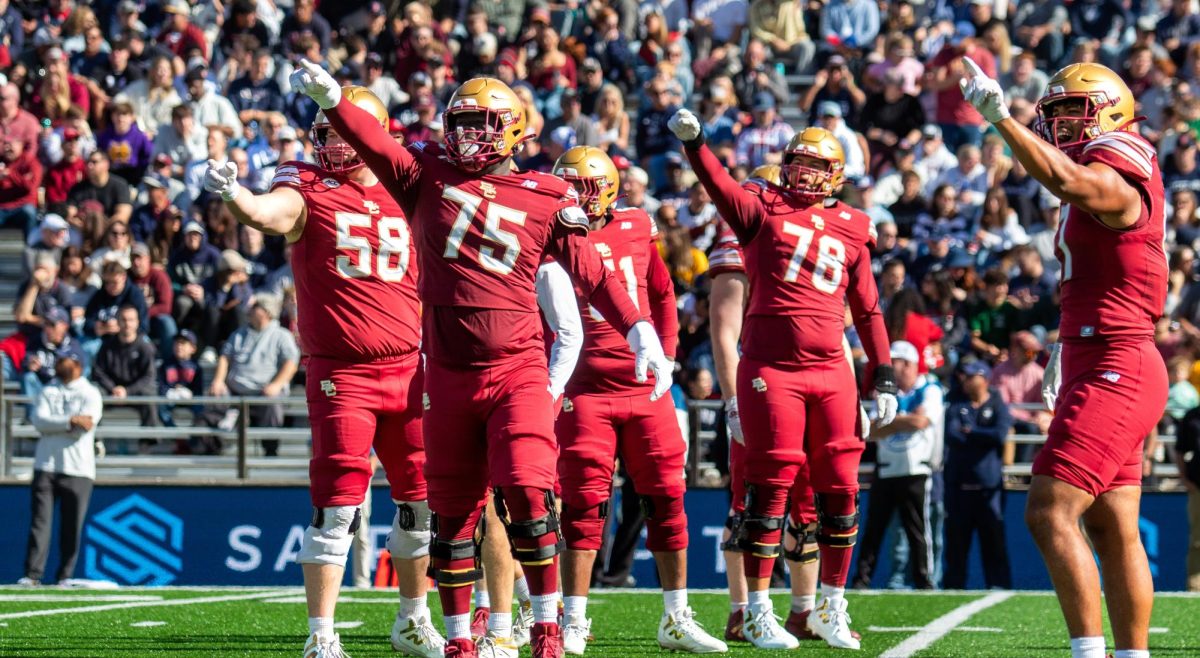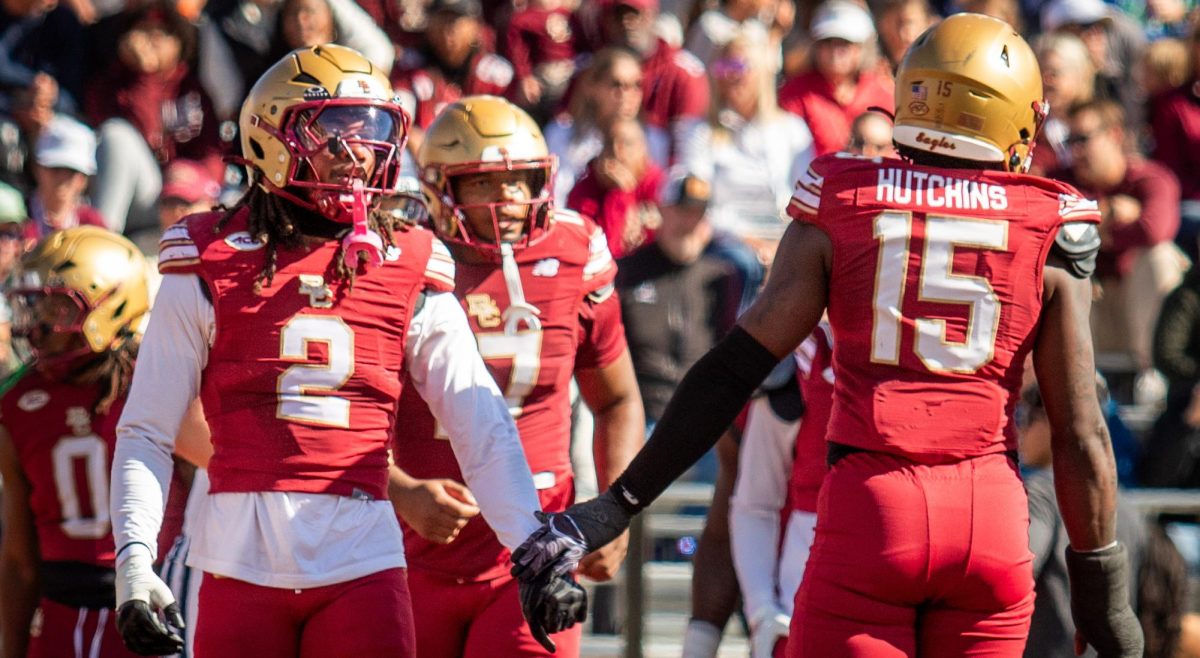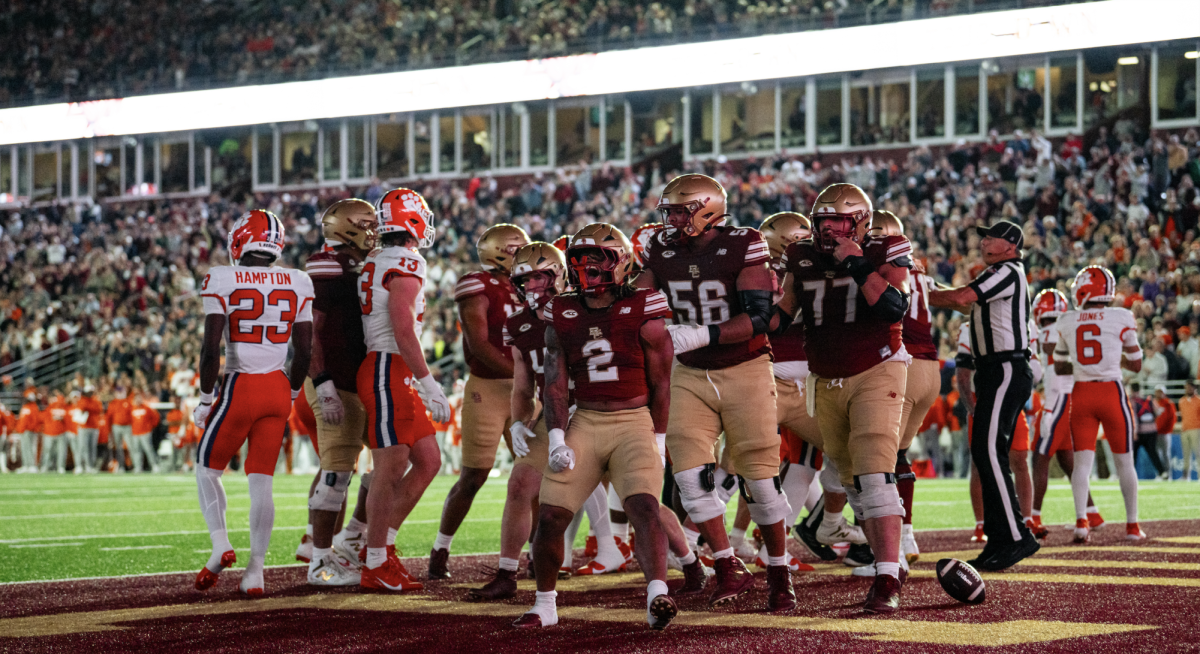A few weeks ago, a berth in the SERVPRO First Responders Bowl seemed unlikely for Boston College football. After the first week of November, the Eagles were 7-2 and sat a couple of wins away from a possible berth in a New Year’s Six Bowl game. Of course, any hopes of playing on the first day of 2019 were quickly dashed by a three-game skid to end the year—losses came to No. 2 Clemson, unranked Florida State, and No. 17 Syracuse—and BC had to settle for a trip to Dallas to play No. 23 Boise State instead.
Now the Broncos are what stand between the Eagles and the program’s first eight-win season since 2009, and long gone are the days when Boise State was a relative unknown on the national stage. The Broncos are the winningest program in college football since 2001, going from being known simply as the team that managed one of the greatest upsets in college football in the 2007 Fiesta Bowl to a legitimate NCAA powerhouse. They finished the regular season with 10 or more wins for the fourth time in five years and will pose plenty of problems on both sides of the ball. Here’s a breakdown of what BC should expect when it takes the field against the Broncos on Dec. 26.
OFFENSE

Offensively for the Broncos, everything runs through Brett Rypien, the highly proficient senior quarterback who was named the Mountain West Offensive Player of the Year. Entering his final career start, Rypien has compiled an impressive 37-12 record, throwing for nearly 14,000 yards and 90 touchdowns in his four years as Boise State’s signal caller. To contextualize his accomplishments, he’ll graduate with the second-most completions and passing yards in program history, behind only Kellen Moore, the winningest college quarterback of all time.
On the field, Rypien is an accomplished pocket passer reminiscent of North Carolina State star and former Boise State quarterback Ryan Finley—who he actually replaced as the teams’ starting quarterback after Finley was injured during the 2015 season—and Trevor Lawrence, arguably the top two quarterbacks in the ACC this season. Watching Rypien play, it’s clear that he displays an excellent touch on deep throws, as well as an ability to maneuver well in the pocket when pressured, much like Finley. BC’s secondary and pass rush will have its hands full trying to slow Rypien down. After all, the Wolfpack had plenty of success against the Eagles defense in a 28-23 win on Oct. 6, with Finley completing 25-of-34 passes (74 percent completion) for 308 yards and two touchdowns and two interceptions.
It also doesn’t hurt that Rypien has a vast array of weapons at the skill positions. Boise State starts two seniors, A.J. Richardson and Sean Modster, at the outside receiver position. Both players have accumulated over 800 yards and have proven to be reliable targets all season long. They are complemented in the slot by CT Thomas, a shifty receiver who excels at creating yards after the catch and extending drives. Standing 5-foot-9, Thomas works well out of the slot and has seen his workload soar this season—he caught 15 passes all of last year but now averages nearly three a game. For a team like the Eagles, who have struggled at times with tackling this season, the Broncos’ top three receivers will pose their fair share of challenges.
At the running back position, Boise State relies heavily on All-Mountain West First Team selection Alexander Mattison, who is the only Broncos back with more than 30 carries this season. This season, Mattison has rushed for 1,415 yards—breaking the 1,000-yard mark for the second year in a row—and 17 touchdowns. He’s got the benefit of running behind a pair of First Team offensive lineman in John Molchon and Ezra Cleveland, and it’s paid off, as Mattison ranks fifth in the country in rushing touchdowns and 14th in rushing yards. He doesn’t figure much into the passing game and doesn’t possess game-breaking speed or quickness, but he is a fundamentally sound runner who reads blocks well and does a good job of creating yards after contact. Once again, tackling Mattison well will be key for BC’s front seven.
As a whole, the Broncos don’t possess elite talent across the board like Clemson or N.C. State, but they do have a highly experienced quarterback and a balanced attack that is capable of beating defenses through the air or on the ground. This is an offense that does the little things well—it’s third in the country in third-down conversion percentage (52.5 percent), limits turnovers, and rides a highly efficient passing attack to victories. The Eagles will need to tackle exceptionally well and make life difficult for Rypien in the pocket if they hope to slow Boise State.
DEFENSE
When judging the threat that an opposing defense poses for the BC offense, it always starts with how well the unit plays the run. This season, the Eagles are 1-3 against teams in the top 50 nationally in rush yards allowed per game, with the one win coming against Miami in October. In that respect, it seems the Broncos match up well. Boise State is allowing opponents to rush for just 122.9 yards per game, the 22nd-best mark in the country, and possesses the 27th-best run stuff rate in the country. What’s more, the Broncos have allowed just one opponent—Air Force—to rush for more than 200 yards this season, and it took the Falcons 51 carries to do so. Though Boise State hasn’t faced a running back as talented as A.J. Dillon thus far, its run defense still profiles as a problematic matchup for BC.
The Broncos aren’t quite as effective against the pass. Boise State has allowed opposing quarterbacks to complete 62.8 percent of their throws, a figure which ranks 101st in the country, and have allowed three different signal callers to pass for over 300 yards this season. The Broncos do, however, have a prolific pass rush that is able to cover some of the deficiencies in the secondary. Led by Curtis Weaver, who has racked up 9.5 sacks on the season, Boise State boasts the seventh-best sack rate in the country, having tackled opposing quarterbacks behind the line of scrimmage on 9.5 percent of dropbacks.
If the Eagles want to find success on the offensive side of the ball, it likely starts with Anthony Brown and the play-action deep shots that BC loves to dial up. The Broncos have allowed 44 passing plays of 20 yards or more this season as they defend chunk yardage in the air at a rate that’s 86th in the country. Despite Boise State’s excellent pass rush, it seems likely that the Eagles will trust their highly experienced offensive line to hold up long enough for the likes of Kobay White and Jeff Smith to stretch the Broncos’ defense for a couple of long gains.
BC utilizes the run to open up opportunities in the passing game, but against a Boise State defense that is much better against the run than the pass, a winning strategy likely necessitates coming out and letting Brown throw the ball from the get-go. Passing early and often against the Broncos would certainly be a break from season-long tendencies for BC, but moving the ball through the air successfully in turn will help the Eagles get Dillon a little bit of room to run. If the sophomore star instead continues to run into stacked boxes because BC refuses to flesh out its passing game, it’s not hard to envision the Boise State defense wreaking havoc all game long.
SPECIAL TEAMS
Much like the Eagles, the Broncos have experienced their share of struggles kicking field goals this season. Boise State’s kicker, Haden Hoggarth, is just 12-of-20 on field goal attempts this season, though he did make 57-of-58 extra points, with the one miss coming in the Broncos’ last contest against Fresno State.
Opponents have also been able to take advantage of poor kick and punt coverage from the Boise State special teams units this season. The Broncos boast the country’s 113th-best kickoff return unit by yards per game allowed and the country’s 125th-best punt return unit by yards per return allowed. They’ve also allowed two punt return touchdowns this season. This is one edge that BC and Michael Walker—who led the country in combined kick return yards for the second-consecutive season—can look to exploit.
Featured Image by Steve Conner / AP Photo
Images by Drew Nash / The Times-News via AP


